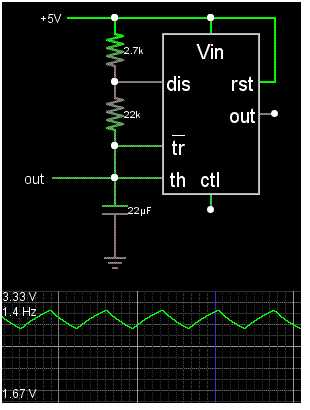vinodstanur
Advanced Member level 3
- Joined
- Oct 31, 2009
- Messages
- 751
- Helped
- 114
- Reputation
- 234
- Reaction score
- 114
- Trophy points
- 1,333
- Location
- Kerala (INDIA)
- Activity points
- 7,054
Hi,
I want to do an LED breathing circuit as a part of a project without any microcontroller. I have many designs , one is a dual opamp based triangular wave generator, another one is a 555 + single transistor based circuit and few more circuits based of 3 or 4 transistors and all are working fine.
But my question is, is there any simpler solution for this rather than putting 8 or 10 discrete components just for making an LED breath? (Breathing of LED means increasing and decreasing the intensity periodically)
I mean, I am expecting a cheap and single chip solution other than a programmable microcontroller. Is there any thing like that?8-O
I want to do an LED breathing circuit as a part of a project without any microcontroller. I have many designs , one is a dual opamp based triangular wave generator, another one is a 555 + single transistor based circuit and few more circuits based of 3 or 4 transistors and all are working fine.
But my question is, is there any simpler solution for this rather than putting 8 or 10 discrete components just for making an LED breath? (Breathing of LED means increasing and decreasing the intensity periodically)
I mean, I am expecting a cheap and single chip solution other than a programmable microcontroller. Is there any thing like that?8-O
